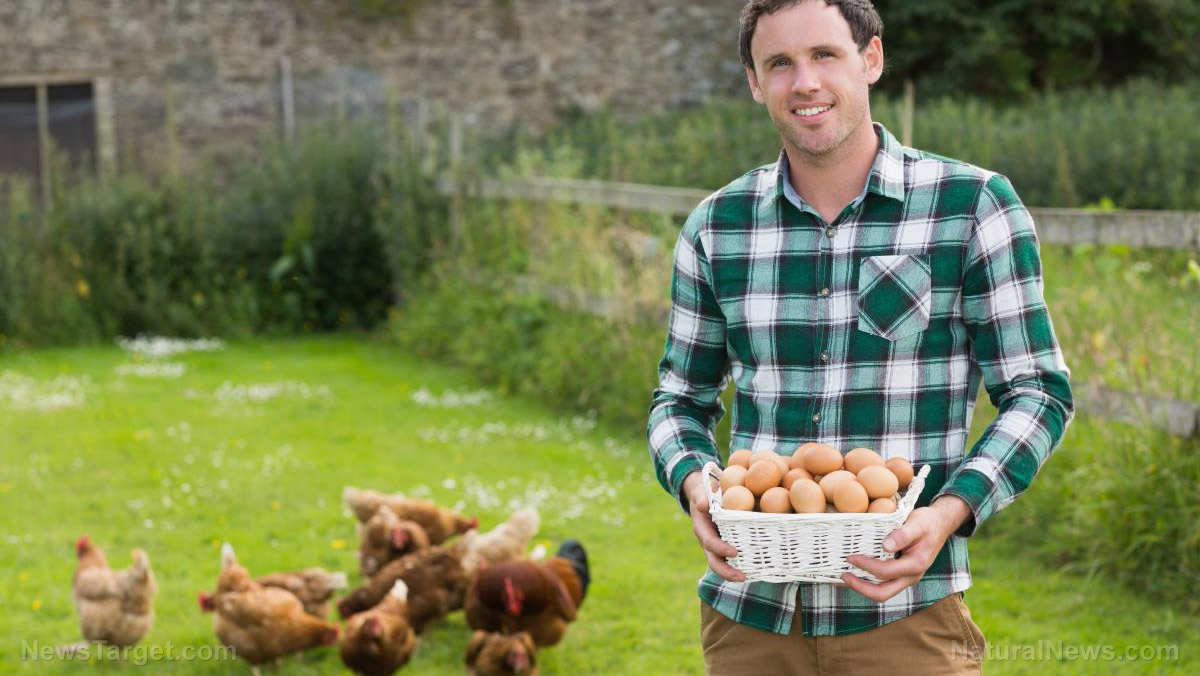Grocery stores in Texas running low on food supplies as cold snap disrupts the state’s supply chain
02/27/2021 / By Zoey Sky

Texans survived a frosty winter storm last week. They might need to survive with frosty foods for the next several days or weeks as grocery store shelves remained empty due to the disrupted supply chain.
Food pantries were also running out of donations. The weather crisis also caused heavy damage to the state’s citrus and vegetable crops.
Texas’ nightmarish February began with a deadly 133-car pileup outside of Fort Worth. Within days, one of the worst winter storms the state has ever experienced followed. Millions of Texans lost power and water.
The cold snap disrupted the production of food, for both humans and animals, and the cold weather and power outages made it difficult for residents to stock up on supplies.
Throughout Texas, people had to rely on the food in their emergency stockpiles as they continued to lose perishable items in their refrigerators due to widespread outages. Others tried to keep their remaining supplies in coolers in the snow.
When Cristal Porter went to a local store in Austin on Feb. 15, it was already out of eggs and meat. It was also running low on milk and potatoes. The store was also full of people lining up to buy more supplies.
Two days later, one of Porter’s neighbors went to the same store. It was already out of food supplies.
Food banks hit hard by cold snap
Grocery stores all over Texas were affected by the lack of power and supermarkets were gradually running out of supplies. The supply shortages also affected food pantries that get their items from grocery store surplus.
School districts from Fort Worth to Houston were forced to pause meal distributions to students for several days.
In the Rio Grande Valley, fruit and vegetable crops have frozen over because of the cold snap.
According to Sid Miller, the Texas Department of Agriculture Commissioner, dairy farmers throughout the state were forced to throw away $8 million worth of milk daily for several days because they couldn’t transport it and the rolling outages meant they couldn’t keep it at a stable temperature or clean their equipment properly.
Celia Cole, the CEO of the hunger-relief organization Feeding Texas, related that eight food banks have turned to the state for extra help to feed their communities. Some food banks working with Feeding Texas have also offered food supplies to emergency warming shelters in the state’s major cities.
On Feb. 17, the Central Food Bank of Texas canceled deliveries scheduled for the following day in Austin and Rockdale. In a media alert, the organization revealed that the Food Bank’s “fleet, equipment, facilities and operations have been adversely impacted by the extremely low temperatures and hazardous road conditions.”
Staff and volunteers were unable to reach the building safely and the cold snap also kept the organization “from distributing food safely.” Cole added that as food pantries rely on donations from retail stores and grocery chains, when store shelves are empty donations also run out.
Texans, livestock growers and farmers struggle amid weather crisis
Because of the power outages and the supply chain disruptions caused by the cold snap, Texans were left eating non-perishable canned goods or shelf stable items such as peanut butter and jelly sandwiches. (Related: Cascend: Data shows wind-power was chief culprit of Texas grid collapse.)
Andrez Rodriguez, a Mission resident, was without power for more than 80 hours. He also had to throw out most of his food supplies in his fridge before going to his brother’s home to eat a warm meal. Despite the lack of power and supplies, Rodriguez returned to sleep at his house to keep it safe in case of looters.
Residents reported their plight on social media, with some sharing stories about being unable to find food supplies or open stores.
On Feb. 18, officials warned that disruptions to the state’s long-term food supply could cause more issues. According to Miller, livestock growers across Texas were out of feed for their livestock. Additionally, the lack of available natural gas has resulted in chickens and calves freezing to death.
Miller compared the situation to when the coronavirus (COVID-19) pandemic first began, adding that things could get worse in Texas. While the milk processing plants are full, they couldn’t get enough electricity to run.
Even if they could, they didn’t have access to enough natural gas to pasteurize the milk, which means grocery store shelves couldn’t get more milk for shoppers.
Citrus and vegetable farms in the Rio Grande Valley were also worried about massive losses.
Dale Murden, president of Texas Citrus Mutual, reported that 60 percent of the region’s grapefruit crop and 100 percent of the late orange crop would be lost due to the cold snap. The area produces 230,000 tons of grapefruit annually but farmers in the Valley predicted that they would lose at least 138,000 tons of their crops.
The area also grows 40 different vegetable varieties like cilantro, dill and kale. These vegetables would most likely be affected by the cold snap as well.
Miller and Cole said that it would be difficult to predict the extent of the losses until power returns to the state. They added that the food supply would continue to suffer if power and water is not restored soon for farmers and stores.
Visit Collapse.news for more updates on the 2021 Texas cold snap.
Sources include:
Tagged Under: cold snap, Collapse, disaster, electricity, food collapse, food pantries, food supply, grid collapse, grocery, harvest, natural disaster, natural gas, polar vortex, power failure, power outages, scarcity, shortage, shortages, starvation, supply lines, Texas, weather crisis, winter storm 2021
RECENT NEWS & ARTICLES
COPYRIGHT © 2017 DISASTER NEWS





















